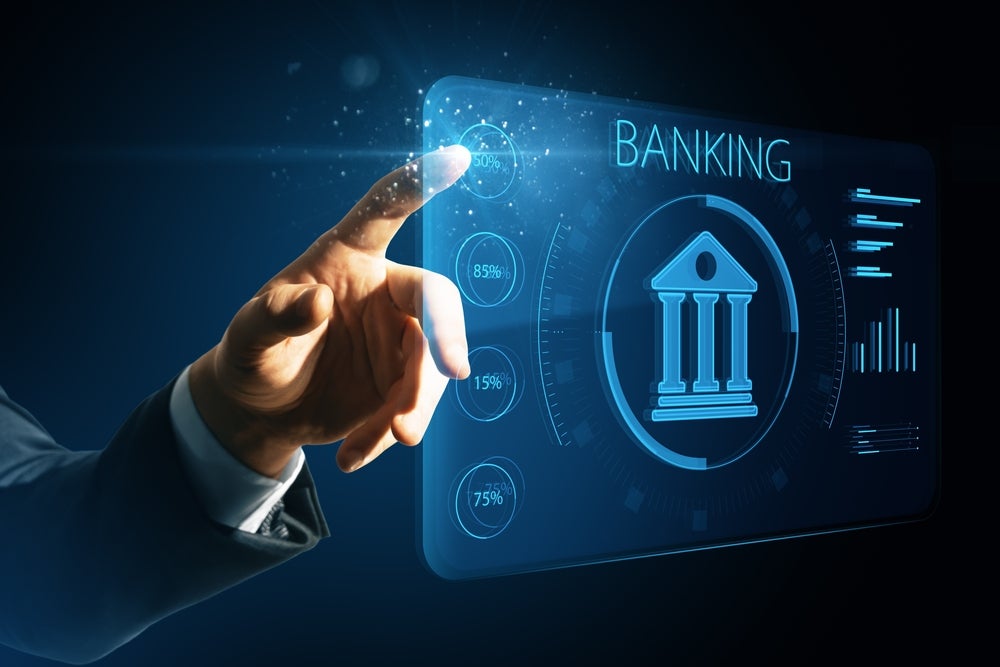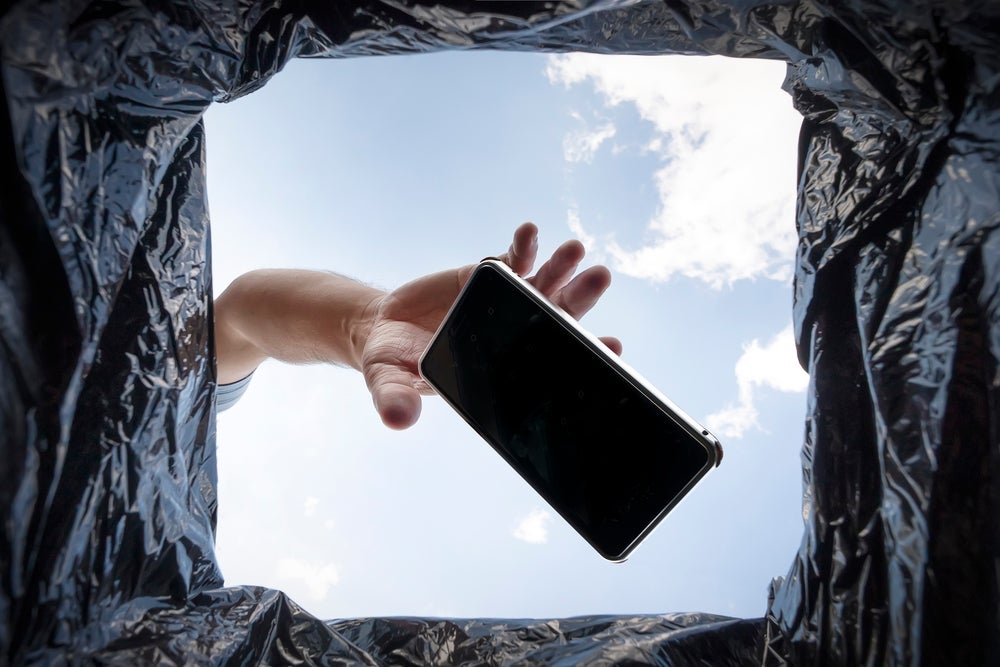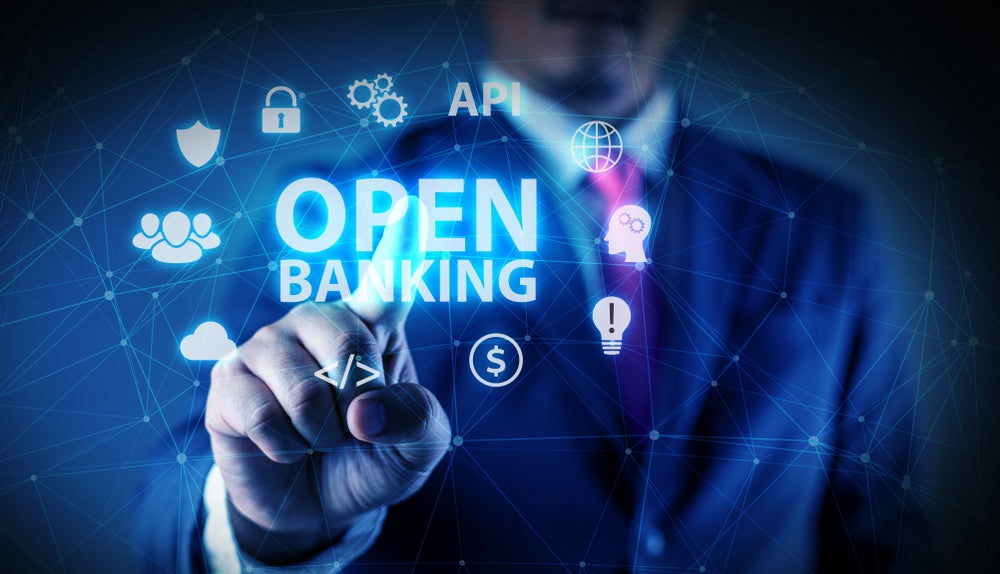Despite Mexico’s high Internet and mobile phone penetration, the country’s 39% bancarisation level means there is low usage of online and mobile banking services. However, major Mexican banks are investing in their digital platforms to take advantage of the growth opportunities in mobile and Internet banking. Robin Arnfield reports
According to John Price, managing director at Americas Market Intelligence in Miami, Florida, Mexico is the most unbanked middle-income country in the world. “In terms of loans as a percentage of GDP and the percentage of people with bank accounts, Mexico is really underpenetrated,” he says.
In recent years, the Mexican government has introduced legislation to facilitate financial inclusion by allowing different levels of simplified bank accounts and simplified capital requirements for start-up banks. Taking advantage of these reforms, several new mobile-only banks are targeting the unbanked and underbanked with digital offerings. In addition, large banks such as BBVA Bancomer, the Mexican arm of Spain’s BBVA, and Citigroup’s Mexican subsidiary Banamex see opportunities to use mobile money accounts to reach this segment.
“Mobile banking is currently a bet that most major banks are taking, since it has the potential to provide access to banks to an otherwise left-out sector of the population,” says the PwC report “Retail Banking in Mexico: An Industry Outlook.”
“Consumer and corporate digital banking services are less well developed in Mexico than in Brazil,” Price says. “With its high level of unbanked consumers and past financial crises which led to banks going bankrupt, Mexico isn’t as profitable a banking market as Brazil, and its banks have been undercapitalised. However, Mexican banks are trying to speed up their investments. There’s a lot of appetite at the senior levels of Mexican banks to adopt more technology.”
Internet and mobile banking
How well do you really know your competitors?
Access the most comprehensive Company Profiles on the market, powered by GlobalData. Save hours of research. Gain competitive edge.

Thank you!
Your download email will arrive shortly
Not ready to buy yet? Download a free sample
We are confident about the unique quality of our Company Profiles. However, we want you to make the most beneficial decision for your business, so we offer a free sample that you can download by submitting the below form
By GlobalDataAccording to a January 2015 BBVA Research report, in 2013 only 16 % of total Mexican banking transactions took place via the Internet and 6.4% via mobile phones. This is despite the fact that, according to Asociación Mexicana de Internet, Mexico had over 50 million Internet users in 2013.
The Competitive Intelligence Unit estimates that there were 104 million mobile phone connections in Mexico in 2014, with 53 million Mexicans owning a smartphone.
A May-July 2014 survey by Banamex found that in 2014 39% of Mexicans aged over 15 in the A, B, C and D socioeconomic segments living in cities of over 400,000 inhabitants, had bank accounts. This represented 22% growth in bancarisation since 2011, Banamex says.
Over three quarters (78%) of Mexicans with bank accounts are Internet users, according to Banamex, and 85% of banked consumers who use the Internet do so via mobile phones.
Surprisingly, the survey found that 75% of banked Internet users don’t bank online, citing reasons such as a preference for branches or concerns about security.
The number of customers banking online has grown slowly since 2011, Banamex says. However, the percentage of consumers making purchases online has risen from 18% in 2011 to 42% in 2014, indicating there is still opportunity for growth in online banking in Mexico, it says.
According to Banamex’s survey, Internet users with bank accounts have 10.5 contacts per month with their bank, of which 48% are via ATMs, 21% online, 27% at branches, and 4% via call centres. Between 2011 and 2014, customers’ online contacts with their banks rose by 16%.
Banamex says 93% of customers who bank via the Internet log onto online banking at least once a month. But the average Internet banking user logs onto online banking 8.7 times a month, its survey found. Three-quarters (75%) of Internet banking users log on to check their account balances, 43% do so to make transfers, 19% pay utility bills and 18% pay credit cards.
The percentage of banked customers receiving banking alerts and notifications via SMS doubled to 29% between 2013 and 2014, the survey found. Between 2013 and 2014, the percentage of customers downloading banking apps increased from 5% to 13%.
Jeffrey Bower, a digital finance specialist with the United Nations Capital Development Fund’s Better Than Cash Alliance, says mobile banking use remains relatively limited to younger consumers, mostly under the age of 35. “Less than 4% of Mexicans have signed up for banking products using their phone,” he says.
Financial inclusion
The Mexican government is using regulation to improve financial inclusion. In 2009, it introduced a law simplifying the capital requirements for start-up banks that restrict themselves to offering savings, micro-loans and payments instruments such as prepaid cards. The first so-called ‘banco de nicho’ (niche bank) licenses were issued in 2012, enabling start-up banks to integrate with Mexico’s ATM and card switches and electronic funds transfer infrastructure.
In 2011, Banco de México (the Central Bank), Comision Nacional Bancaria y de Valores (CNBV, Mexico’s national banking and securities commission) and the Mexican government introduced legislation allowing four different levels of bank account, with different limits on monthly deposits and different KYC requirements.
The tiered structure aims to ensure provision of low-cost, basic bank accounts with simple KYC identification requirements to unbanked consumers, with the possibility of linking these accounts to mobile phones.
The lowest level of account, an anonymous prepaid card, requires no proof of identification and can’t be used with mobile phones, while the highest level, a traditional bank account, requires standard KYC procedures.
According to Martha Casanova, a consultant at World Bank subsidiary CGAP’s (Consultative Group to Assist the Poor) Technology Programme, citing CNBV data, in January 2015 there were 1.9 million Level 1 accounts, 5.6 million Level 2 accounts, 430,000 Level 3 accounts and 70 million Level 4 (traditional) bank accounts in Mexico.
“Mexico has a very solid payments infrastructure, but its population is still largely cash-based,” says Elizabeth McQuerry, a consultant with Glenbrook Partners. “However, people are now opening basic bank accounts and the level of bancarisation is growing.”
“Mexico’s multi-level basic account regulation is allowing some financial institutions to develop digital business models for low-risk accounts,” says Álvaro Martin Enriquez, Head Economist, Digital Regulation, at BBVA Research in Madrid. “Some banks such as Acertum (a mobile-only bank owned by Grupo Salinas), Bankaool (an online and mobile bank formerly called Agrofinanzas) and Banco Azteca (owned by Grupo Salinas’ financial services and retailing arm Grupo Elektra) are opening Level 2 accounts online, with a focus on specific segments of the unbanked population such as the under-30s.”
“The big players will probably start offering Level 2 online account opening during 2016,” says Enriquez. “Level 1 accounts are anonymous and very limited, so there’s no point in offering them online. In my opinion, the most interesting part is how the unbanked are now receiving distinct value propositions according to their specific characteristics. Moreover, digital banking might further evolve thanks to these new clients entering the market.”
Bower says the lack of interoperability between different Mexican mobile money schemes such as Banamex’s Cuenta (account) Transfer and BBVA Bancomer’s Dinero Móvil (mobile money), with schemes being limited to one provider, is hindering adoption of mobile money accounts by the unbanked.
“However, the Mexican Central Bank has been upgrading its national interbank payment settlement system, SPEI (Sistema de Pagos Electrónicos Interbancarios), to act as the default settlement system for payment networks, including potential mobile money transactions,” he notes. “This should help ensure low-cost mobile money transfers.”
Another barrier to the growth of mobile money is the fact that, according to Madrid-based Tecnocom and Analistas Financieros Internacionales’ “Trends in Payment Instruments 2015” report, Mexico has progressed slowly in the rollout of non-bank correspondent agent networks, even though it has a long way to go to cover its entire populated territory with correspondent agents. These agents are non-bank locations such as convenience stores where bank customers can deposit and withdraw cash or pay bills.
Banamex
Currently, Banamex has 1.4 million online banking customers, says spokesperson Gerardo Gregoire Crespo.
In October 2015, Banamex launched its first digital branch in Mexico City offering videoconferencing with product specialists, a central workbench with touchscreen computers, digitally-literate millennial staff, and a self-service area with ATMs and tablets.
“We expect to have 200 digital branches in Mexico by 2018,” says Gregoire Crespo. “This branch is based on the new digital branch design that Citi will offer to all its customers worldwide.”
According to Mexican press reports, the purpose of Banamex’s digital branch is to encourage customers to use self-service technology, with cashiers available for transactions of over MXN 10,000 ($542) and for more personalised transactions.
For unbanked consumers, Banamex offers the Transfer SMS-based mobile P2P service in partnership with mobile operator Telcel and Mexican convenience store Oxxo. Transfer’s two million users can deposit and withdraw cash using a prepaid debit card at Oxxo’s 11,000 stores as well as at 7-Eleven Mexico and Soriana stores.
Bankaool and BBVA Bancomer
According to Mexican press reports, Bankaool, which describes itself as Mexico’s first branchless bank, had over 20,000 deposit customers at the end of 2015. The bank says it signs up an average of three new customers every hour via its digital channels.
Bankaool’s credit portfolio grew by 25% between December 2014 and December 2015.
In July 2015, BBVA Bancomer opened the Mexican offshoot of the BBVA Innovation Centre, a space where the bank can demonstrate emerging technologies. BBVA has also opened Innovation Centres in Bogota, Madrid and New York.
Hugo Najera Alva, BBVA Bancomer’s Head of Digital Banking, said in a statement that the bank has three prerogatives: “Mobile first, as mobile devices are what enable the bank to assist customers with their big decisions; big data, because by learning to use data we can identify the key moment in which the bank needs to contact a customer; and the Openlab environment where FinTech startups and main market players collaborate.”
BBVA Bancomer has 2.7 million mobile banking customers who carried out 490 million mobile banking transactions in 2015. The bank has 2.7 million web banking customers, who carried out 1.17 billion web banking transactions last year.
Najera Alva told RBI that 19% of the bank’s total transactions occur via its mobile channel.
During 2015, BBVA Bancomer made the following changes to online banking:
– Eliminating passwords for frequent transactions;
– New one-time password generation process for non-frequent transactions;
– Simplification of the fund investment process;
– New loan simulator, allowing customers to simulate different loan scenarios, pay existing loans, and apply for new loans;
– More history (up to five years) and greater flexibility in transaction searches, and
– Online feedback at the end of sessions.
The bank made the following changes to its mobile banking service in 2015:
– Simplified enrollment process;
– Higher transaction amounts can now be processed through the channel;
– New loan simulator, allowing customers to simulate different loan scenarios, pay existing loans, and apply for new loans, and
– Four new apps:
o BBVA Wallet, which generates a one-time password for online purchases, plus card-blocking and activation;
o BBVA Send: money transfers to a sender’s mobile phone contacts without needing their bank account number. Beneficiaries don’t need to be a bank customer;
o Vida Bancomer: geolocalised, targeted offers from merchants to BBVA Bancomer cardholders, and
o Línea Bancomer, enabling customers to phone call centre agents directly, without needing to go through the bank’s IVR system.
In 2012, BBVA Bancomer launched the Dinero Móvil SMS-based P2P transfer service which is targeted at unbanked consumers, allowing recipients to withdraw cash via mobile phones and 12-digit codes from ATMs without needing cards or bank accounts. In March 2015, BBVA Bancomer enhanced the service to enable it to be used for mass payments from employers and government welfare departments.
Santander Mexico
Santander Mexico has over 500,000 active mobile banking customers, who carry out over 300 million transactions a year. The bank has 700,000 active Web banking customers who carry out over 280 million Web transactions a year.
Mobile accounts for over 20% of Santander Mexico’s total banking transactions, says spokesperson Gamal Duran Castellanos.
During 2015, Santander Mexico embedded a security token in its mobile banking app, so its customers no longer need a token device for transactions.
“Our app was the first banking app in Mexico to be compatible with all four platforms, Android, iOS, Windows Mobile and Blackberry,” says Duran Castellanos. “Our SuperMóvil app offers investments, credit card payments, utility bill payments, and transfers, while in addition to these our SuperNet web banking service offers tax payments, withdrawals from credit card accounts, and money transfers.”
Santander Mexico operates the Autocompara, Viajacompara and Casacompara portals where consumers can search for best car insurance, travel and property deals respectively.
Casacompara currently showcases 78,000 homes and offers quotes for Santander mortgages. In Q3 2015, the site had over 455,000 visits, Santander says.
Autocompara offers car insurance quotes from 10 insurers. In August 2015, Santander launched the new Autocompara app enabling users to report accidents and their precise location from their smartphone via geolocation.
“Autocompara has changed the way people get car insurance in Mexico, because everything is online and you can choose the best quote for your car,” says Duran Castellanos.
Scotiabank
Dieter Jentsch, Scotiabank’s group head of international banking, told a Mexico City Investor Day in January 2016 that Scotiabank plans to expand its retail banking operations and enhance its banking platforms in Mexico, Chile, Colombia and Peru to capitalise on the expanding middle class in these countries.
“Scotiabank has realised that technology is key to its success in Mexico and Latin America,” says Americas Market Intelligence’s Price. “But this is a new realisation, and Scotiabank has a long way to go to modernise its Latin American banking systems.”
Bloomberg quoted Jentsch was quoted as saying Scotiabank wants to develop more primary customer relationships, simplify and digitise the customer experience, and optimise its structure to fund growth. Scotiabank Mexico will be a ‘leaner, more competitive diversified bank’ with more digital offerings and a larger customer base, Bloomberg quoted him as saying.
Scotiabank predicts C$40m ($28m) to C$60m in incremental earnings from digitising its Chilean, Colombian, Mexican and Peruvian banking operations, plus C$35m to C$50m from developing more primary customer relationships, and C$30m to C$40m in cost-savings from optimising its infrastructure.
Scotiabank has appointed digital banking innovator Ignacio Deschamps as Strategic Advisor, Global Digital Banking to its President and CEO, Brian Porter. Based in New York and Toronto, Deschamps will work with technology Co-heads Michael Zerbs and Kyle McNamara to digitise Scotiabank’s systems and processes, it said.
Deschamps was formerly chairman and CEO of BBVA Bancomer and Global Head of retail banking at BBVA and has extensive FinTech and digital experience.
The January 2016 investor presentation said that, as part of the digitisation process, Scotiabank Mexico wants to cut its branches’ share of its total transactions from 35% in 2015 to 20% over the next three to five years, with other channels growing from 65% to 80% in the same timeframe. Scotiabank plans to enhance its Mexican mobile and online banking channels, while migrating low-value transactions from branches to mobile and online.
Previously, Scotiabank Mexico announced plans in October 2014 to invest MXN3.6bn ($195 million) up to 2019 to improve its operational platforms and delivery network.
In 2015, Scotiabank Mexico had 70,000 mobile banking customers, who carried out 10 million mobile banking transactions. The bank also had 335,000 Internet banking customers who carried out 50 million web banking transactions in 2015.
Scotiabank Mexico spokesperson Hector Lopez Rangel told RBI that 20% of the bank’s total banking transactions take place via Web banking and 4% via mobile banking.
Services offered to digital banking customers include bill payments, time deposits, balance transfers, credit card payments, mortgage and personal loan payments, and a virtual token sign-in option.
During 2015, Scotiabank Mexico launched a new version of its mobile app which allows bill payments to be made by scanning the bill’s barcode and generates a security token during the transaction flow.








